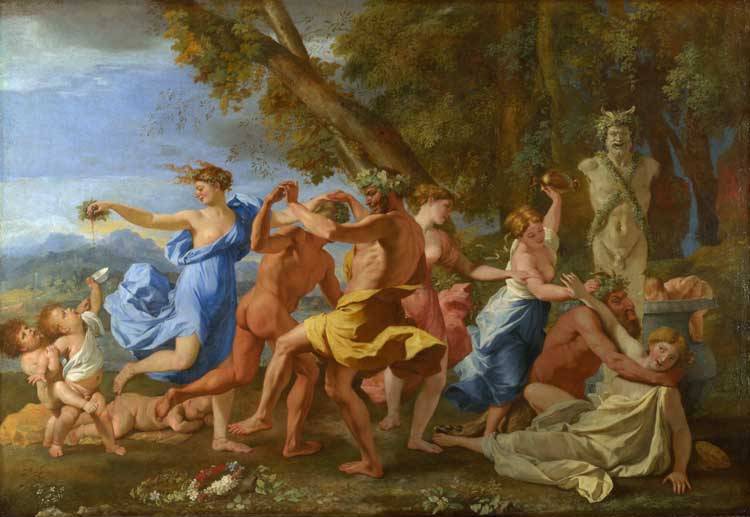On the eve of the feast day of St Vincent, patron saint of winemakers, this week’s bibulous painting is Nicolas Poussin’s Bacchanal Before a Term, painted in Rome sometime in the first half of the 1630s. In a sylvan landscape, revellers in various states of undress drink and dance before a term - a pillar topped with torso and head - of an ancient god, either Pan or Priapus, both associated with fertility and drunkenness.
One of the first paintings acquired for the British nation, the work was enthusiastically analysed by the painter and engraver John Landseer in his Descriptive, Explanatory and Critical Catalogue of Fifty of the Earliest Pictures Contained in The National Gallery of Great Britain, published in 1834:
“The dancers consist of four Wood-nymphs, or Bacchantes; two Fauns; and three or four chubby sylvan boys. One of the Wood-nymphs, although engaged in the dance, contrives, in passing, to squeeze grapes into the wine-cup of a little thirsty soul who eagerly reaches for it, while another less favoured little curly-pated rogue would share the boon; a third boy has fallen down, having already had too much of the delicious beverage; and a fourth, having climbed the side of a large sculptured vase, is stooping his head in order to partake without stint or measure of the exhilarating contents of the mighty bowl. The principal male figure of the group is a sort of Faun, slightly habited in yellow drapery: his head bound with ivy, and his rubicund face and figure, replete with ‘tipsy dance and jollity’, is almost beaming with mirthful enjoyment… But the most prominent, if not the most poetic, incident, in the whole composition, is, that an intrusive Satyr has rushed in a wild freak from some neighbouring thicket or circumjacent grove, and, dashing...

ITP 40: Bacchanal before a Term, by Nicolas Poussin
21-01-2001

